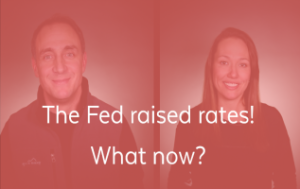P2P risks discussed and myths debunked
Have you heard these common p2p myths? Tune in to find out!
TRANSCRIPT:
Defaults. The most despised term in the p2p world. But, as the new adage goes… ďthere are three guarantees in life: death, taxes and defaultsĒ. Which naturally makes this a frequently asked question. Are defaults going up? Down? What will they be in 6 months? Ö. Summer, do you have a crystal ball?!
I donít have a crystal ball, yet, and the likelihood of that happening is equal toÖ well… having no defaults in your portfolio.
Even though we canít predict the future, we can get a good sense of defaults by using data from NSR Platform to analyze the Lending Club index from 2008-2014.

A few things to keep in mind about this chart: 2008 shows a default rate of 11.82%, but only 2,400 notes had been issued at that time and Lending Club was still in its infancy, but we are including it to be objective about the risks. Similarly, the Loss Rates for the more recent vintages arenít fully baked yet, as you can see from their weighted average age. Because portfolios mature around the 18-month mark, we naturally, we expect to see an increase in losses for 2015.
The good news is that even when we factor all this in, default rates have still been stable since 2010!
What impact might defaults have on my portfolio? We believe unemployment has a correlation to default rates but since it is a lagging indicator, we donít use it to predict next yearís defaults. There will be some fluctuation in defaults, so to get a sense how this might impact your p2p portfolio, letís look at the historical data again. The average default rate for Lending Club from 2008-2014 is 7.45% and the standard deviation is 2%. So, letís assume defaults shoot up to 9.45%. Your monthly interest income would go down from $136 to $95 per month.
P2P has proven itself to have low volatility and low correlation relative to the broader markets and fetches a comfortable ROI averaging around 7% for the past 6 years.
Another important point to note, Lending Club and Prosper are constantly monitoring performance and adjusting borrower interest rates accordingly. This actually just happened at Lending Club; where they noticed higher defaults rates in riskier grades and increased the borrower rates.
To show why p2p is a good allocation in a well-diversified portfolio, letís compare the last 6 years of p2p to the s&p 500.
 Data from NSR platform from 4/26/16
Data from NSR platform from 4/26/16
S&P returns have varied from -36% to 32.15%, while Lending Club returns have varied from 0.41% to 8.36%. So the S&P return range has been 68%, while the Lending Club range was 7.95% — all in positive territory. Wow!
As always, you know where to find us!
It is important to always understand the risks of investing in any asset class – and p2p is no different.

